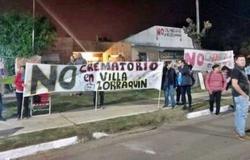
President Gustavo Petro’s idea of convening a National Constituent Assembly has aroused interest, doubts and, above all, has created a political storm in Colombia. The president mentioned the initiative on March 15 in a speech in Cali, just when his social reforms were stalling in Congress. “The National Constituent Assembly must transform the institutions so that they obey the people their mandate of peace and justice,” the president stated then. His proposal unleashed a cascade of reactions and harsh criticism from different political sides, including several congressmen from the ruling party.
Some politicians, such as former presidential candidate Sergio Fajardo, were quick to express that the president went back on his word when mentioning the convocation of a Constituent Assembly and reminded him when, as a candidate, he promised not to invoke that figure.
The noise increased after the Presidency published a document titled ABC constituent project to explain the issues that the president would seek to address and inform that presidential re-election would not be among the points to be discussed. But in the speeches, the president has said a couple of phrases that maintain the specter of re-election and feed the idea of the constituent assembly. In fact, a senator from her party, Isabel Zuleta, stated that seeking a second presidential term was the core of the call.
The latest statement that has once again shaken the political landscape came after officials close to the Petro Government pointed out the idea of using the peace agreement to convene a Constituent Assembly, something that was classified as “absurd” by former President Juan Manuel Santos.
Beyond the compilation of what has happened and the debate between politicians, analysts and opinion leaders, citizens have been left lost in the middle of a list of legal concepts and cumbersome terminology that prevents them from understanding what is happening. Searches to find out what a National Constituent Assembly means have increased on Google in recent weeks. Below are the keys to understanding this discussion:
What is a Constituent Assembly
Newsletter
The analysis of current events and the best stories from Colombia, every week in your mailbox
RECEIVE THE
The Constituent Assembly is a figure contemplated in the 1991 Constitution that allows the country’s Magna Carta to be modified or reformed. 30 years ago, the Seventh Ballot student movement promoted, with presidential support, the courts and citizens, a constituent process to change the 1886 constitution.
How to convene a Constituent Assembly
According to the Constitution, the first step is for the Congress of the Republic to approve a law to consult citizens about the proposal to create a Constituent Assembly. The standard must specify five aspects: the call to the assembly, the number of members it will have, the topics that will be included, the election system, and the start date and its period.
After its definition and approval, the law must go to presidential sanction—for the president to sign it—and to the Constitutional Court so that it can give its approval and certify that the call is constitutional. Once this procedure is completed, Congress must call Colombians to a vote. The card will ask about each established topic and will have the options “Yes” and “No”.
The Constituent Assembly will be approved only if a third of the electoral roll—the people eligible to vote—check “Yes.” That would be about 13 million voters. These are almost two million more votes than Petro obtained when he was elected in the second round.
What topics does Petro propose for a Constituent Assembly?
After the president expressed the idea of calling a constituent assembly in Cali, the Presidency’s communications office released a document to try to address the theories that circulated and clarify what the president was looking for. According to that document, the call would focus on six topics:
- Effective implementation of the 2016 Peace Agreement, which will take into account aspects such as agrarian reform and the solution to the problem of illicit drugs.
- Guarantee basic living conditions for all in the short term, including health, pension and access to water.
- Judicial reform so that the system is more effective and has a restorative dimension in terms of truth and guarantees of non-repetition.
- Proposal around territorial reorganization, where local autonomy is strengthened and the excluded territory is included.
- Climate change.
- Establish a dialogue around the end of violence in Colombia and reconciliation.
Is it viable to call a Constituent Assembly?
At this time, as the political mood is, the proposal would not be viable. President Petro would need a majority in Congress, but all parties have questioned the process. One thing is the approval of the reforms that are advancing, even if at a slow pace, and another is that of a call of this magnitude.
And if the environment were to arise for both the Senate and the House to approve it, the call would have a major challenge: getting more than 13 million Colombians to go to the polls and vote positively for the proposal.
Call a constituent, an idea that is not exclusive to Petro
President Gustavo Petro is not the first, and surely will not be the last, to express his desire to convene a constituent assembly. Former President Álvaro Uribe already did so in 2016 after the peace agreements with the extinct FARC guerrilla. He proposed it as a way to review and change what had been agreed in Havana. And, in 2020, the Democratic Center party put on the table a constituent in response to the decision of the Supreme Court of Justice to order the house arrest of the former president.
Subscribe here to the EL PAÍS newsletter about Colombia and here to the channel on WhatsAppand receive all the information keys on current events in the country.





